Geotextiles and grids are essential for adding strength, longevity, and durability to even small hardscape projects. In this online guide, we’re going to give a simplified lesson in soil mechanics, explain how using fabrics and grids can enhance various hardscaping projects, and provide a detailed breakdown of the most common types of products available on the market. Enjoy!
Geotextiles and grids, or geosynthetics, are commonly used to support civil engineering projects such as roads, retaining walls, reservoirs, etc. They’re also used in smaller-scale hardscaping projects to improve strength, stability, and overall design.
We like to think of fabrics and grids as very cheap insurance.
The term “geotextile” was coined by Dr. JP Giroud during a presentation at an engineering conference in Paris back in 1977. However, these materials were already being used out in the field before this time.
In response to a deadly North Sea flood in the Netherlands in 1953, “the Dutch incorporated geotextiles into the extraordinary Delta Works flood protection scheme in the early 1960s.”
And constructed in 1970, “the Valcros Dam in France set the stage for a number of important dam and embankment designs that utilized geotextile filtration for long-term performance." (LandAndWater.com)
While the benefits geosynthetics have provided to the civil engineering world are apparent throughout history, it’s a lesser known fact that fabrics and grids can impart longevity and durability to smaller-scale hardscape projects as well.
In the next section, we’ll give a simplified lesson in soil mechanics to help paint the picture.
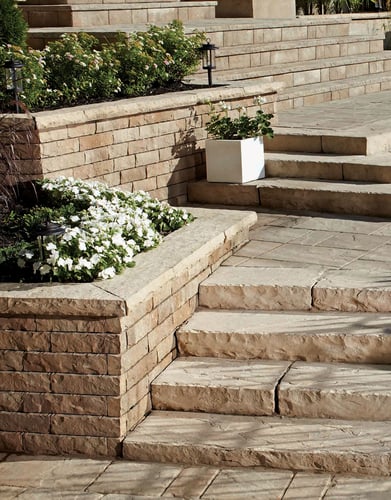
Since geosynthetics help to improve soil characteristics, it’s important to first understand soil mechanics and the three main stresses that can impact a hardscape project: Compression, Tension, and Shear
Here are some definitions and analogies to clarify the meaning of each:
In the context of a hardscape project, it’s important to simply keep these stresses in mind when choosing a geotextile or grid. Next, we’ll take a look at how these products help to alleviate the three different types of stresses.
Depending on the type of product, geotextiles and grids can provide five different elements to significantly strengthen and improve a hardscape project: Separation, Reinforcement, Filtration, Protection, and Drainage. Let’s examine each...
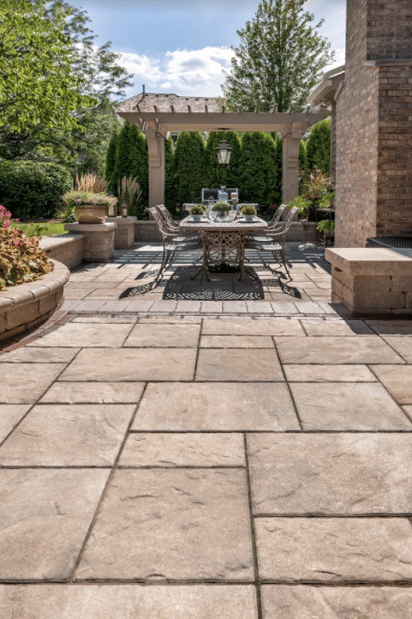
Geotextiles help to maintain the integrity of each material used in a project by preventing the bedding material from settling into the subbase and preventing the subbase from mixing with the native soils. This separation of materials will essentially allow each material to perform as it was intended to. The end result: maximized strength and stability.
Acting as a separation barrier between materials used below the surface, geotextiles or grids will reinforce the entire design. These products have a higher tensile strength than soil, therefore, they will add a very high level of durability and help prevent deformations and/or failures from occurring in the future.
Non-woven geotextiles eliminate the possibility of soil mixing and clogging of drainage systems by serving as a filter. As water moves through the layers below the surface, fine particles and silts are left behind. This will prevent any clogging within the system (as well as future damage that could be costly to fix).
Geotextiles can provide an added level of protection to a hardscaping project. They can be used as a layer of padding (i.e. under a pond liner) and also serve to effectively protect slopes against erosion.
Lastly, a non-woven geotextile will allow for subsurface water drainage and moisture removal from the system.
Again, depending on the product, the above features will vary. The next section details the most common types of geosynthetics and the benefits they have to offer.
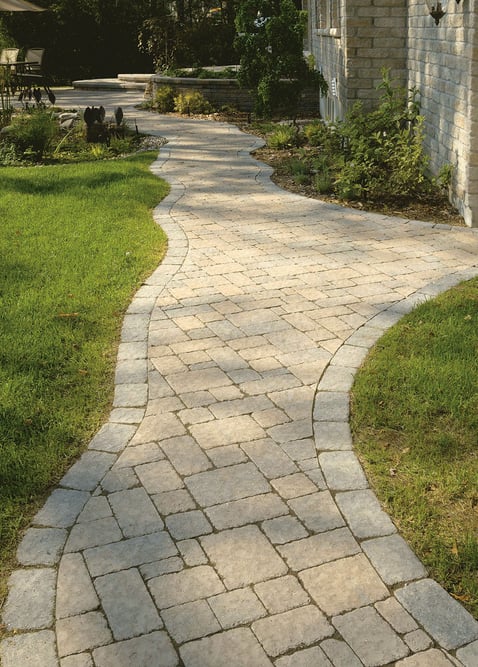
Geotextiles are most commonly made of polyester or polypropylene. A variety of these products are readily available within the marketplace. That said, it’s important to understand the features and benefits in order to determine how each one will function within different hardscape applications. Let’s first take a closer look by breaking down the differences between woven and non-woven geotextiles.
Woven geotextiles are manufactured by weaving together narrow strips of film. They perform the functions of separation and reinforcement and are commonly used in applications that require high levels of stabilization or support.
Woven geotextiles are referred to by Tensile Strength, which is the resistance a material has to breaking under tension. Generally speaking, woven fabrics are more plastic-like in feel and appearance. While they are relatively impermeable and don’t offer drainage, they do have a very high load capacity and are commonly used for roads and parking lots.
The primary functions of a non-woven geotextile are separation, filtration, and drainage. The manufacturing process of these fabrics involves needle punching as opposed to weaving. Non-woven fabrics are referred to by weight (i.e. 3.4 oz. per square yard) and are more felt-like in feel and appearance. They offer permeability and are commonly used in applications where drainage and filtration are of key concern (i.e. in ditches or underneath drains). Non-woven geotextiles can also be used for erosion control.
Polyspun geotextiles are non-woven fabrics and their main function is separation. While they are permeable and provide drainage, they will not provide any reinforcement to a project. Polyspun geotextiles are referred to by lifespan and are most commonly used as weed barriers.
Spunbond fabrics are also fairly commonplace within the market. The spunbond process is considered the fastest manufacturing method for non-woven fabrics. During this process, extruded filaments are spun onto a belt and bonded by applying heated rolls. Like polyspun geotextiles, spunbond fabrics will provide drainage but no reinforcement. They are referred to by weight and commonly used as weed barriers or as drainage fabrics.
Geogrids are commonly used for retaining walls or to reinforce the soil beneath roads. These products are extremely strong in tension (and therefore classified by tensile strength). While soil will typically pull apart under tension, the use of a geogrid will allow forces to transfer throughout a much larger area than would otherwise be the case.
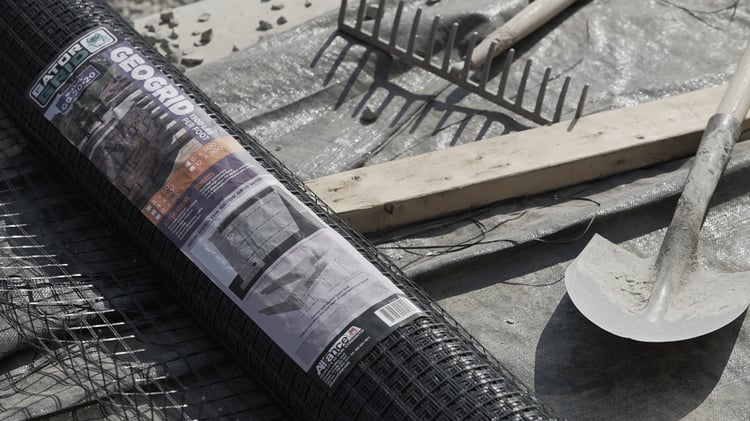
A geogrid looks and feels much different than a geotextile or fabric. As its name implies, it’s a grid that’s typically made of polyester or polypropylene and feels like plastic. The grid is formed by ribs and apertures. The apertures are the openings that allow soil to strike through.
While geogrids are most commonly seen in large-scale engineering projects such as retaining walls and roads, they can also be used in smaller engineered hardscape projects to help prevent soil and wall movement, which can lead to settling and very expensive repairs down the road. (Geogrids can be used for erosion control and general reinforcement as well.)
There are two types of geogrids available in the market: biaxial or directional. Biaxial grids can be used in any direction and have equal strength in both directions. Directional grids have greater strength along one axis and need to be installed accordingly. With a directional grid, the greatest strength is typically parallel to the roll.
Geogrid placement will depend on many different factors: loading/surcharge, slope, soil type, hydrostatic/hydraulic load, the type of block used, etc. For information on how to utilize a geogrid within a particular design, it’s best to seek the advice of an engineer.
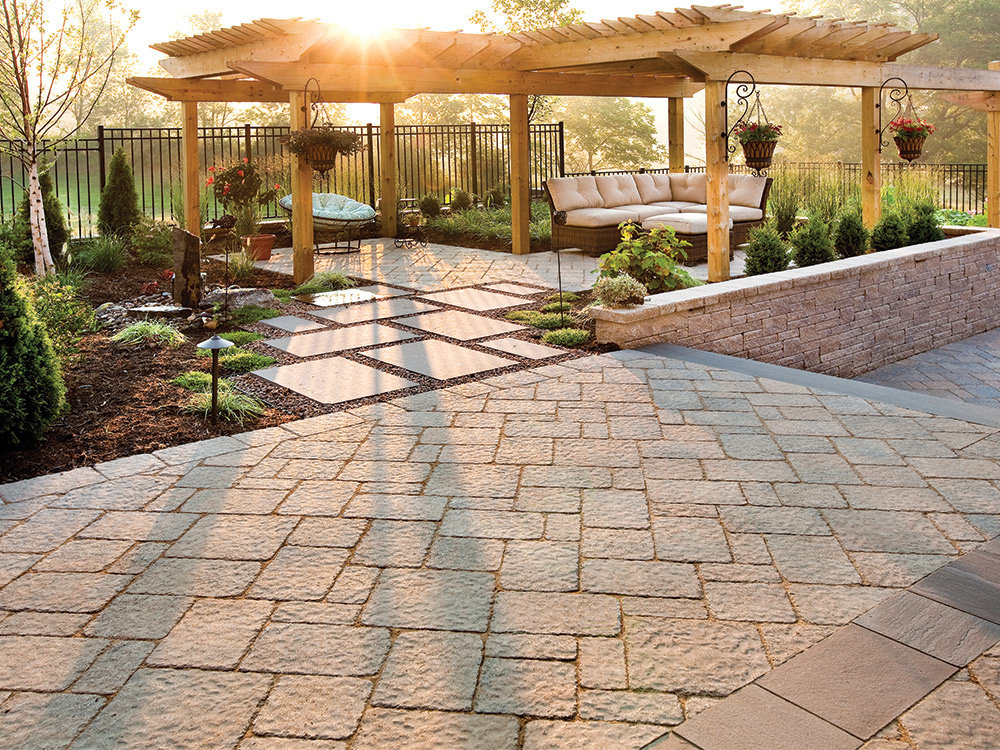
Geosynthetics are a great way to protect and elongate the life of a hardscape project, no matter the size.
Grids reduce stress and load transfer to a structure, provide soil separation for added stability, and help control erosion.
Woven fabrics offer a cost-effective solution for reinforcement applications. They help stabilize the foundation for paver projects and can be utilized in a number of different applications including: driveways, pathways, sidewalks and retaining walls. Woven fabrics can also be used for ground cover and soil separation.
Non-woven fabrics are ideal for areas that require drainage. They can be used in small-scale paver installations or behind retaining walls. They also provide soil separation, which adds stability to a project. Polyspun and spunbond non-woven fabrics serve as weed barriers and are commonly used in plant or rock gardens.
These products serve as insurance and should be considered for every hardscape project to avoid future job failures and callbacks. To learn more about Alliance’s offering of fabrics and grids, be sure to visit: alliancegator.com/products/gator-grid-fabric